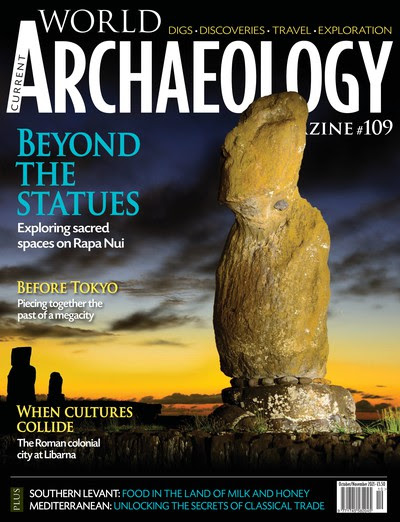The statues of Rapa Nui (Easter Island) are among the most celebrated archaeological monuments – and enigmas – in the world. But looking beyond them reveals that they are just one part of larger ceremonial complexes. These can include distinctive canoe-shaped houses that seem to have been carefully designed to reflect the islanders’ views about how the everyday and sacred worlds were ordered. Could it be that understanding how people passed between realms when entering the houses also offers clues about the role of the famous statues?
Excavations associated with the Tokyo Olympics have also been helping archaeologists to take a wider look at a rich past, in this case of a megacity. Although the first town on the site was not founded until AD 1603, tracing the development of the region leads us from the pottery of ancient hunter-fisher-gatherers through to 19th-century industrialisation. Along the way, we encounter prehistoric rituals, samurai mansions, a Medieval battlefield, and much more.
We have the Romans to thank for the founding of a town at Libarna, in northern Italy, around the mid 2nd century BC. While investigations over many decades have laid bare the well-appointed residences and varied leisure opportunities enjoyed by residents, the site is also important for presenting an early example of a Roman colonial city. Here we can witness how Roman and Gallic cultures collided, a century or so before Caesar’s Gallic war.
Empires were also expanding into the southern Levant, which fell under the sway of powers including the Egyptians, Assyrians, and Hittites during the Bronze and Iron Ages. Study of ancient diets in the region allows us to see how prehistoric tastes changed, revealing what was on the menu in the land of milk and honey.
Finally, Richard Hodges lifts the lid on how food and other commodities were traded around the Mediterranean by providing a profile of Paul Reynolds, who has shown how the humble pot can revolutionise Classical archaeology.

